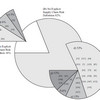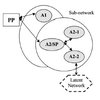 What is supply chain risk really? That is what Iris Heckmann, Tina Comes and Stefan Nickel try to answer in their article titled A critical review on supply chain risk – Definition, measure and modeling, published in 2015. In this paper, existing approaches for quantitative supply chain risk management are reviewed by setting the focus on the definition of supply chain risk and related concepts. What they found may actually surprise you. Or not.
What is supply chain risk really? That is what Iris Heckmann, Tina Comes and Stefan Nickel try to answer in their article titled A critical review on supply chain risk – Definition, measure and modeling, published in 2015. In this paper, existing approaches for quantitative supply chain risk management are reviewed by setting the focus on the definition of supply chain risk and related concepts. What they found may actually surprise you. Or not.
Supply Chain Risk is still undefined
Supply chain risk is still a very new field of research in a historical perspective, still lacking some common ground and still taking off in different directions, still not having a universal and agreed-upon definition of supply chain risk. From that point of view the authors boldly state that “This review overcomes a hole in the literature which regards the lack of a clear definition of risk within the context of supply chain risk management.” Having dealt with supply chain risk one way or the other for a decade now I first thought they might have bitten off more than they can possibly chew, but as I read on I realised that they are on the way to something, definitely yes.
Deja-vu
In parts this paper reads like a cross-section of this blog, citing articles and reports I am quite sure they must have found here. That said, they also have a vast number of references that are completely unknown to me. What I can see though is that the authors have done an extremely thorough job in collecting and reviewing not only the core literature on supply-chain risk, but they have also managed to link and connect more peripheral literature that deals more indirectly with supply chain risk. What I think this papers shows is how the combined strength (i.e. research interests) of three authors can work together in creating the fullest possible overview of supply chain risk literature.
Risk – a historical recap
Something I really enjoyed reading was the historical recap of how risk was used and understood from the very beginning, starting with the old Greek rhisikon, describing the need to avoid difficulties at sea. Already then, more than two thousand years ago, risk had some connection to (sea-faring) commercial activities. In the 14th century Northern Italian traders adopted the term for describing the danger of losing their ships, and here
risk expresses the fear that economic activities lead to the loss or devaluation of an important asset or a decrease in the performance of the business.
Risk in today’s supply chains is perhaps not very far from this century-old definition of risk? That may be, but, along with the advancement of mathematical theories in the 17th century, risk became increasingly connected to probability theory and the probability of events and outcomes. That is how we most often understand risk today, in mathematical numbers. However, supply chain risk literature seems to be very little concerned with probability theory. Perhaps that is why what the authors lament most of all is “a lack of a clear and adequate quantitative measure for supply chain risk that respects the characteristics of modern supply chains”. My counter-question is, why do we need that? The answer is in my last paragraph below.
Supply Chain Risk – analysed, analysed and analysed
The authors do an excellent job in research, classifying and sorting the past and present supply chain risk literature, really giving new insights into where some of literature fits in. Going into details here would take it to far. All I can say is that the literature is reviewed and scrutinised from every possible angle I can think of, and more. I must say that I now have a much fuller understanding and wider perspective of all facets of supply chain risk.
Supply Chain Risk
Towards the end the authors come of with this definition of supply chain risk:
Supply chain risk is the potential loss for a supply chain in terms of its target values of efficiency and effectiveness evoked by uncertain developments of supply chain characteristics whose changes were caused by the occurrence of triggering-events.
Is this a good definition of supply chain risk? It seems to comprise everything, but at the same time it appears a bit abstract and perhaps even a bit akward, i.e. academically correct, but difficult to understand in practice. That said, it’s not any worse than ISO 31000 that defines risk as “the effect of uncertainty on objectives”, which is even more abstract.
Conclusion
What this paper does show, and I must commend the authors on their efforts, is that the supply chain risk literature has a great number of vastly different definitions and modelling approaches, and reviewing all of them must have been a daunting task. Given this diversity it is no wonder then that supply chain risk still lacks a common ground for research. Perhaps then we should just let supply chain risk be what is, complex, and not fit for quantifying?
Giordano Bruno Revisited
I’m reminded of what I wrote 10 years ago, in a discourse on reliability and vulnerability in transport networks, where I discussed my proposed PhD topic and my intention to quantify reliability and vulnerability so that it could be used in a cost-benefit decision. In the end I found out that quantitative research was not my cup of tea and I decided to go with Giordano Bruno instead.
Giordano Bruno (1548-1600) was a philosopher who took the current ideas of his time and extrapolated them to new and original vistas. Bruno advocated the use of conceptualising, that is to think in terms of images. He said that to think was to speculate with images. Complex scientific correlations are often better explained in pictures than in mathematical formulae. Rather than spinning his ideas from the yarn of algebra, the cobweb of modern science, Bruno moulded pictures and manipulated visual images to interpret complex ideas.
The reason for researching supply chain risk is to make better supply chain management decisions. With Bruno in mind, decisions should not be determined by numbers alone; decisions should be fully envisioned and comprehended by the decision makers. This is only possible by speculating with images what the outcome of the decision will be. Following Bruno’s lead, leaving the mathematical world of risk and probability behind, perhaps supply chain risk research should stay as it is, diverse and rich in images and concepts, but poor in formulae. From my point of view I hope it does so,
Reference
Heckmann, I., Comes, T., Nickel, S. (2015) A critical review on supply chain risk – Definition, measure and modeling. Omega (52), 119-132 DOI: 10.1016/j.omega.2014.10.004
Author links
- linkedin.com: Iris Heckmann
- linkedin.com: Tina Comes
- linkedin.com: Stefan Nickel
Related posts
- husdal.com: Supply chain risk – a complete review?
- husdal.com: Reliability and vulnerability – a question of cost and benefit











